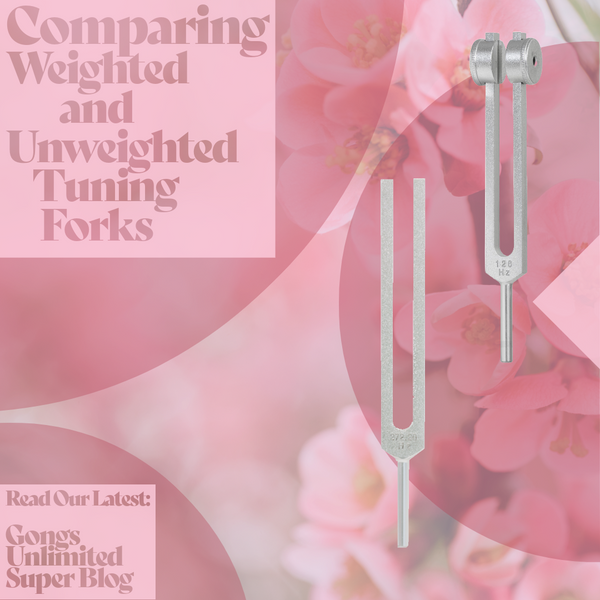Talking Tuning: 440 Hz and 432 Hz
"Everybody's talking at me, I can't hear a word they're saying, only the echoes... of different tuning standards."
I believe it was Harry Nilsson who sang that. Or maybe he said something slightly – like 8hz – different... it doesn't matter. What matters is that we're all living in an ocean of sounds, and we're all Seinfelding, "What's the deal with 432 Hz and 440 Hz?!"
It's good to know you're not alone. And you certainly aren't. We had to take a few informational deep dives ourselves to sift through the noise and find the facts on the history of tuning standards.
What's Frequency, Kenneth?
"I never understood the frequency, uh-huh, what's the frequency, Kenneth?" sang the gnostic gnomes from that hipster band R.E.M. Now, almost 30 years later, here we are asking Kenneth the same question. People are abuzz about 432 Hz as the hottest "new yet old" tuning standard. Or they're saying "No way, 440 all day!"
But what does that mean? How is it measured? Here's a refresher:
Frequency describes the number of cycles in a sound wave (or any type of energy wave, like light or electromagnetic energy) in a given period of time. One cycle is the distance on a wave from one peak to the next. 
A standard "time period" we measure in our modern times is the "second". The unit "Hertz" (abbreviated as Hz) is the number of wave cycles per second.
If a sound moving through air is measured at 432 Hz, that means that the sound wave will go through 432 full cycles (crest, trough, and the next crest) each second, creating the specific tone that you perceive through your ears.
So you'll be receiving 432 little microblasts of vibrating air every second, which your ears translate into a perceived sound. To compare, a sound that's 440 Hz has 8 more cycles or wavelengths passing each second.
Please hear this: when you play your gong, unless it is very small and very tuned, a whole range of frequencies (fundamental tone, overtones and undertones, octaves and harmonics) come from it, never just a single frequency. This creates an overall sonic experience.
Didja know, didja, didja? This interesting fact:
The modern measurement of "Hz" wasn't used until 1834 when a group of physicists measured the "cycles per second" of the sound from a tuning fork. Before this, ancient musicians of 2500 years ago measured tone with a soundbox or a monochord, which were more like scientific and mathematical devices than they were musical instruments. They weren't able to measure Hz with these devices, but they could measure ratios, relative pitches, and scales. So they were understanding sound in terms of increments and ratios, even though the increments themselves were not yet clearly defined (neither seconds, nor hertz).
The History of Tuning Standards
So how did we get from there to here, with scales and notations, frequencies and tuning standards?
In the 1700s, after centuries of musical and cultural development and the advent and growth of symphonies and orchestras all over the world, A4 -- which is the A above middle C, in the 4th octave-- was set as the tonal tuning standard. They were like, let's do it, enough with the 1700s dating apps like Serfmingle or OkCoupd'etat, let's get into a relationship, one single note. That means that A4 became the note to which all instruments in the orchestra would be tuned. That way, all instruments would be in tune with each other, creating harmony.
However, depending what part of the world you were living in, A4 could be anywhere from 400 Hz (a modern G to G#) to 480 Hz (modern Bb to B). That means that in the 18th century, an A4 at the London Philharmonic would sound different from an A4 played by the Vienna Symphony.
In 1713, Joseph Saveur, a French physicist, worked off of Middle C rather than A, and he set C to 256 Hz (putting A at 430.54 Hz). By doing this, every octave of C landed on an even integer (with no decimals), making the math calculations very easy as powers of 2 (2, 4, 8, 16, 32, 64, 128, 256, 512, etc.), which was preferable in a time without the calculator app on your phone. However, even this standard depends on whether the intervals between notes are measured equally (called Equal Temperament) or using something else, like Pythagorean Temperament, or the Scale of Twelve Fifths (which sets intervals in such a way that both 256 C and 432 A fit nicely in the same scale; not true under Equal Temperament).
In 1939, an international conference was set up to decide on an international tuning standard. Suggestions ranged from 433.5 Hz to 439 Hz to 443 Hz. It was like a "Guess How Many Jellybeans in a Jar" at a School Fundraiser.
Even then, the A4 at 440 Hz standard wasn't finally agreed on internationally until 1978, and many symphonies and orchestras still ignore this standard. The New York Philharmonic of today uses 442 Hz, and many in Europe use 443 Hz or 444 Hz. Most popular music you hear today uses the A 440 Hz tuning standard, though there's plenty of music out there that uses 432 Hz or other standards.
How Do I Decide?!
So what is the superior, most healing, and amazing tuning standard? How can I even begin to decide what's right for me? What if I choose the wrong tuning standard?! Can I still heal with sound?
We think the most important thing to consider is: what do you and your clients prefer? What sounds right to you? What feels right to you? If you have a tunable instrument, adjust it to the 432 Hz standard and see if it's for you, or buy an instrument tuned according to 432 Hz standards. One thing that stands out to us is that all of the units and standards are variable depending on how you measure a second, how you set the intervals between notes on a scale, or whether you're talking about Eastern or Western music, and on and on.
When Pythagoras was developing his ratio and interval-based tuning, neither Hz nor seconds existed as units of measurement. His unique ratio-based temperament system has been used by some to justify the 432 Hz standard as more natural because the ratios, frequencies, and notations align nicely when paired with the 432 Hz standard. But that tuning style only accounts for four consonant intervals (nice-sounding chords: octaves, fifths, fourths, and unisons).
Modern music has evolved to include imperfect consonances like major/minor thirds, sixths, seconds, and sevenths, which can't be accomplished in the Pythagorean system.
Does that mean 432 Hz is antiquated, or even antediluvian? No, as we mention, it is what like. We've listened to songs side by side, performed using the different tuning standards, and often we enjoy the 432 Hz version better, though not always.
Here's an example from artist Paul Davids:
Ultimately, or perhaps penultimately, sound and music have the power to heal the mind and the spirit, it can relax and relieve the body. Vibrations and energy fill the spectrum of frequencies, with or without our tuning systems or standards. We create these systems and use them to try to understand the power and beauty of nature, but we will always be limited and constrained by these different systems and the subtle discrepancies and differences between them. So we say: use them all. Go for it, friends! Like using the right tool for the job, if it calls for a wrench, grab the wrench. If you need a hammer, get your hammer. If your spirit needs the 432 Hz tuning standard, grab it from your toolbox.
At the very least, it's always fun to experiment with different tunings, temperaments, and standards. It can help you to come up with something new, or experience music in a different way, from a different perspective. And that's a good thing.
So whether you're rocking 432 Hz, 440 Hz, or getting wild down in the 400 Hz zone, just do it! Play that music, set your intention, and spread love and joy.
There's no mathematical limit to love and joy.
For further reading and to see the sources for the info we laid out above, take a look at the articles below:
https://www.piano-tuners.org/history/pitch.html
https://www.izotope.com/en/learn/tuning-standards-explained.html
https://emastered.com/blog/432-hz-tuning-standard
Also in Gongs Unlimited Super Blog

What's the Difference Between Weighted and Unweighted Tuning Forks?
Tuning Forks are a great way to bring new sounds to your meditations and healings. But what's the difference between Weighted and Unweighted Tuning Forks? What are the best ways to use each? We've got some answers to help you make your decision!

Everything You Didn't Know but Wish You Knew About Quartz and Frosted Crystal Bowls

Thirteen Questions with Gong Maker Ryan Shelledy of Shelledy Sounds
Ryan Shelledy has been making gongs for over a decade from his hand-built foundry in the Midwest. His amazing creations blur the line between, art, sonic sculpture, percussion, and sound healing tools. He is always innovating and developing beautiful, unique pieces that keep us excited for his next delivery of gongs. Learn more about his work in our recent interview with him!


M H
Author